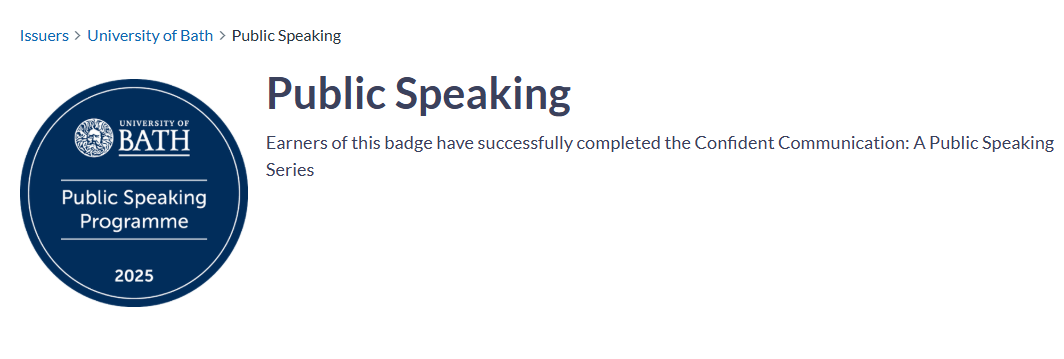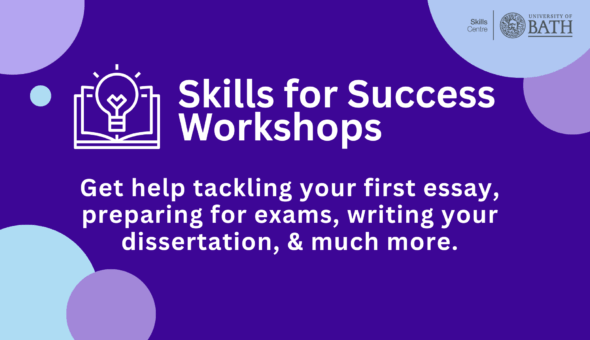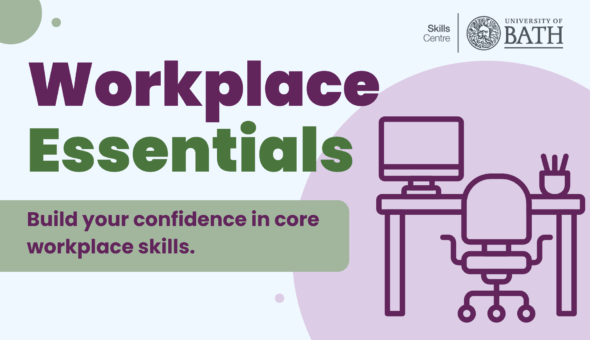When excellence becomes invisible
Picture this: You have just delivered a confident two-minute presentation. Your hands did not shake (much), you maintained eye contact, and you even managed to inject some humour at exactly the right moment. You navigated your anxiety, structured your argument beautifully, and engaged your audience throughout.
But when someone asks, "What are you good at?" you draw a blank.
This is what is known in Higher Education as the skills articulation challenge. The well-documented phenomenon where students develop genuine competencies yet struggle to see, name, or articulate them. It is a challenge that sits at the heart of what we do in the Skills Centre and Careers Service: not only supporting students to develop capabilities and skills but helping them understand and articulate these in varying contexts, from job applications to professional networking, from academic reflection to career planning.
It is this challenge that made the Public Speaking Programme an ideal candidate for our Digital Badges Pilot, part of the Digital Badge Project here @Bath.
What are digital badges, anyway?
Before I dive into the messy, fascinating reality of our pilot, let me explain what we are talking about.
Digital badges are verified, portable credentials that recognise specific skills, competencies, and achievements. Think of them as richer, more detailed alternatives to traditional certificates. Credentials you can display on LinkedIn, share with employers, and use to tell your professional story.
But here is what makes them powerful: unlike a module grade that simply says "passed," a digital badge captures the story behind the achievement. It articulates what you did, what skills you demonstrated, what evidence you provided, and why it matters to the world beyond university.
They are not just participation trophies (though that is a concern we have wrestled with). When designed well, they make the invisible visible.
The pilot: Public Speaking as a testbed
The four-session Public Speaking Programme was immediately intriguing as a pilot opportunity. Here was a programme that supported students to confidently deliver a two-minute presentation, a transformative journey that deserved recognition beyond a simple attendance certificate.
The programme itself is comprehensively designed:
- Session 1: Overcoming anxiety through breathing techniques, visualisation, and mini self-introductions.
- Session 2: Structuring effective speeches with practice presentations.
- Session 3: Engaging audiences through voice, body language, and storytelling.
- Session 4: Delivering confident final presentations with peer feedback.
Students' progress from managing their nerves to delivering polished presentations. They practice giving and receiving constructive feedback. They reflect on their growth. The skills development is rich, authentic, and demonstrable.
Perfect for a digital badge, right?
Well... yes and no.
The complexity we did not anticipate
Here is where the pilot got interesting (translation: complicated).
As we mapped the programme against digital badge standards, the SACK framework (Skills, Attributes, Competencies, Knowledge) that ensures badges represent genuine achievement, we discovered layers of complexity:
The Evidence Challenge
How do you capture meaningful evidence without creating bureaucracy?
Through collaborative reflection with colleagues, a crucial question emerged: "Are we badging completion and participation, or assessing learning?" This reframing was transformative. We needed to focus on what genuinely serves student development, structured learning experiences and meaningful reflection, rather than creating an assessment infrastructure that could overshadow the supportive learning environment we wanted to maintain.
The answer became clear: recognise authentic engagement and growth through evidence that students were already generating as part of their learning journey, not additional hurdles that might turn a developmental experience into a compliance exercise.
The Reflection challenge
Students need reflection to uncover their skills, but when does productive reflection become performative documentation? We wanted students to think deeply about their growth but not create another hoop to jump through.
Research from The Association of Graduate Careers Advisory (AGCAS), the professional association for careers services, confirms what we were seeing: students often struggle to recognise skills developed outside formal academic settings. Even more tellingly, they typically only engage in reflection when prompted by immediate need e.g. a job application, an interview.
How do we design reflection that genuinely serves learning rather than just evidence collection?
The Language Barrier
What even is "audience engagement"? Or "professional communication presence"? These phrases that careers professionals throw around confidently can feel alienating or abstract to students.
The AGCAS "Uncovering Skills" report highlights this: there is no shared vocabulary across students, academics, and employers. Students might develop emotional intelligence, strategic thinking, or resilience but lack the language to name what they have gained.
What we are learning (the hard way)
Having completed the Public Speaking Programme (for Semester 1, it will be running again in Semester 2), here is what is becoming clear:
1. Simple is strategic
Our final badge criteria looks refreshingly straightforward:
- Attend and actively participate in all four sessions.
- Complete the two-minute final presentation.
- Submit reflections at four designated points.
- Evidence engagement (ideally through My Employability Profile).
No complex peer assessment matrices. No elaborate portfolio requirements. Just clear expectations that recognise genuine engagement and growth.
Sometimes the most innovative thing you can do is resist overcomplicating.
2. Integration matters more than innovation
Rather than creating new systems, we are leveraging what students already use: Reflection, existing session activities for skill demonstration, the natural peer feedback processes already built into the programme.
The AGCAS report calls this "making skills visible and recognisable", helping students identify where skills are being developed using discipline-relevant language and real-world examples.
The badge does not change the programme; it makes the learning more tangible.
3. Process is as valuable as product
Honestly? Yes. Working with colleagues to map competencies, define criteria, and articulate value has made the programme's impact clear. We can now explain exactly what students gain, why it matters to employers, and how it transfers to professional contexts.
The badge metadata we developed, describing skills demonstrated, attributes developed, competencies evidenced, and knowledge gained, serves as a powerful communication tool whether students earn the badge or not.
4. Equity must be central, not peripheral
Who has time to attend four sessions? Who feels confident speaking in front of peers? Who already has the cultural capital to articulate their skills?
The AGCAS research is stark: international students struggle with the cultural framing of employability. Students with caring responsibilities face time poverty. Those from widening participation backgrounds often undervalue their experiences.
Our criteria of "participation to the degree students are able to" is not woolly language, it is an intentional equity consideration. A badge should recognise growth and engagement, not privilege those who already have advantage.
The bigger picture: What this means for Bath
This pilot sits within something much larger: a university-wide digital badge project we are developing through several pilot programmes.
Why now? Because the world of work is changing faster than our traditional recognition systems can keep pace. Employers increasingly want to understand not just what students studied, but what they can do. Students need portable, granular credentials that tell their story beyond module grades.
But more fundamentally, we are wrestling with a question that matters beyond badges: How do we help students recognise and articulate the rich learning happening across their university experience?
Whether it is through formal curriculum, extra-curricular programmes, part-time work, volunteering, or life experiences, students are developing capabilities that deserve recognition and celebration.
The AGCAS report offers a powerful framing: "Uncovering skills is a shared responsibility, and a powerful opportunity, to transform how students understand themselves, their experiences and learning, and their future."
Digital badges are one mechanism. But the real work is cultural.
What happens next?
We will gather feedback from students and staff, analyse what worked and what needs refinement, and share our learnings with the Digital Badge Steering Group.
Other pilots are running in parallel, each testing various aspects of badge design and delivery. Together, they will inform how we develop a sustainable, equitable, institution-wide approach.
But here is what I am most excited about: the conversations this work is generating.
If you are a student reading this: What skills have you developed at Bath that you struggle to name or explain? Where is your learning invisible to you?
If you are a colleague: How might digital badges (or the thinking behind them) enhance recognition in your area? What would make skill development more visible in your context?
The skills articulation challenge will not be solved by digital badges alone. But thoughtful use of digital credentials, combined with intentional reflection and supportive guidance, might just help students see what has been there all along.
Their own growth. Their genuine capabilities. Their unique story.
And that recognition? That is worth the effort.
Respond



